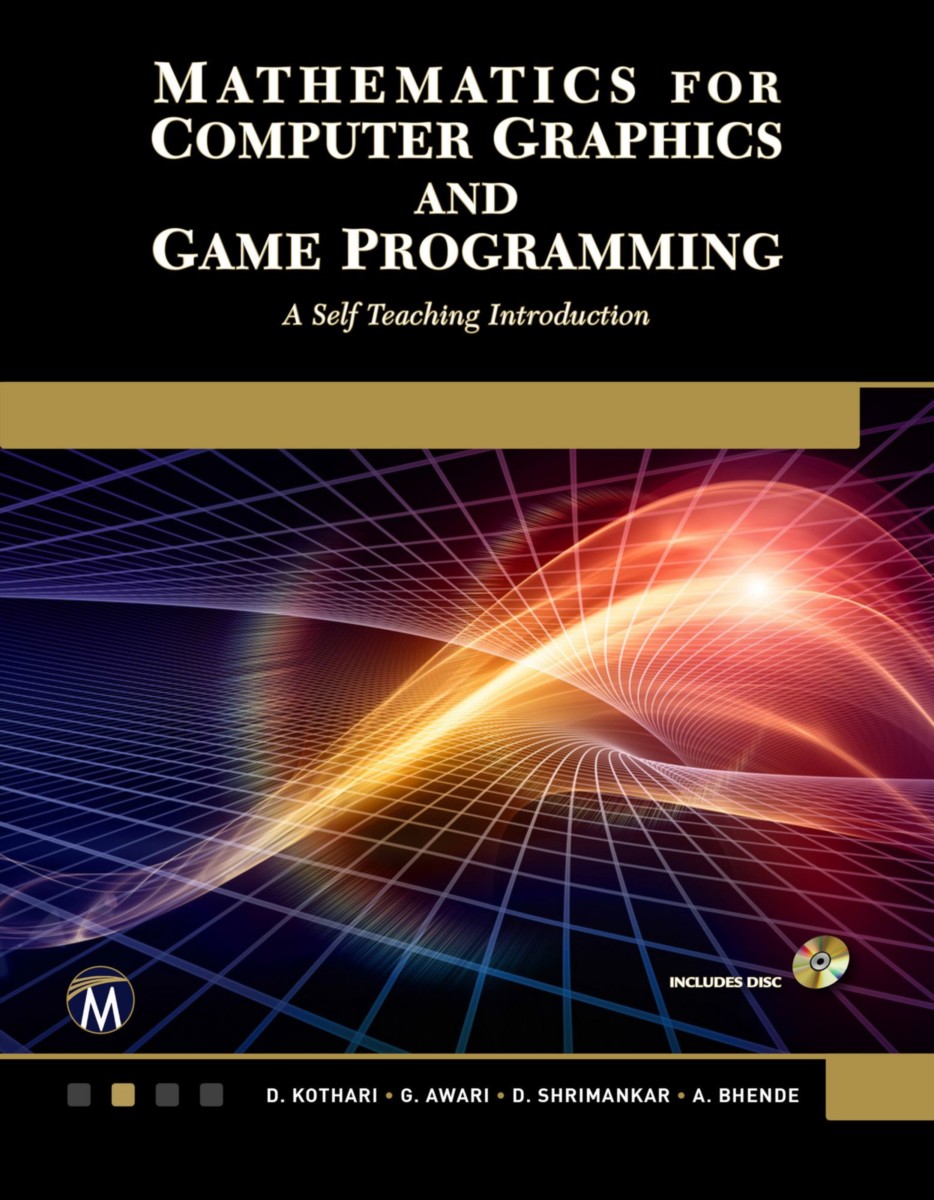Mathematics for Computer Graphics and Game Programming
A Self-Teaching Introduction
- Publisher
Mercury Learning and Information - Published
22nd January 2019 - ISBN 9781683923565
- Language English
- Pages 400 pp.
- Size 7" x 9"
- Request Exam Copy
E-books are now distributed via VitalSource
VitalSource offer a more seamless way to access the ebook, and add some great new features including text-to-voice. You own your ebook for life, it is simply hosted on the vendor website, working much like Kindle and Nook. Click here to see more detailed information on this process.
- Publisher
Mercury Learning and Information - Published
3rd January 2019 - ISBN 9781683923558
- Language English
- Pages 400 pp.
- Size 7" x 9"
- Request E-Exam Copy
Library E-Books
We are signed up with aggregators who resell networkable e-book editions of our titles to academic libraries. These editions, priced at par with simultaneous hardcover editions of our titles, are not available direct from Stylus.
These aggregators offer a variety of plans to libraries, such as simultaneous access by multiple library patrons, and access to portions of titles at a fraction of list price under what is commonly referred to as a "patron-driven demand" model.
- Publisher
Mercury Learning and Information - Published
3rd January 2019 - ISBN 9781683923572
- Language English
- Pages 400 pp.
- Size 7" x 9"
Designed to explain the mathematical concepts involved in computer graphics and its entities, this book is ideal for courses in computer graphics, engineering, game development, as well as for professionals in industry. It begins with simple concepts such as how an image is generated on the screen and then moves to cover the different algorithms for the generation of simple geometry on the screen. The following chapters include two-dimensional and three-dimensional transformations, parametric representation of planar curves and parametric representation of space curves such as cubic splines, Bezier curves, etc. In addition to programming in C, OpenGL, and several other topics, it includes a final chapter on the methods of generating 3D models.
Introduction to Computer Graphics
Vector Representation of Geometric Entities
Two-dimensional Transformation
Three-dimensional Transformation
Parametric Representation of Planar Curves
Parametric Representation of Space Curves
Parametric Representation of Surfaces
Windowing and Clipping
Generation of 3D Models
Projections
Graphics Programs in the C Language
OpenGL with Computer Graphics
Programming Graphics Using OpenGL.
Appendices
Index
D. P. Kothari, PhD
D. P. Kothari, PhD, is a distinguished academician and researcher with a career spanning several prestigious institutions. His extensive contributions include 780 research papers and 38 books. Recognized globally, he is a Fellow of IEEE and multiple Indian academies, and has received several prestigious teaching awards.
G. K. Awari, PhD
G. K. Awari, PhD, brings 21 years of teaching experience and expertise in computational fluid dynamics. His research spans 21 international journal publications and is a noted reviewer for prestigious international journals.
D. D. Shrimankar, PhD
D. D. Shrimankar, PhD, specializes in parallel computing and embedded systems. Her teaching spans 15 years, focusing on computer graphics and networks. She has published extensively in international journals.
A. R. Bhende, PhD
A. R. Bhende, PhD, specializes in Mechanical Engineering with a focus on condition monitoring and maintenance techniques. He has authored numerous international publications and teaches computer aided design and engineering graphics.


